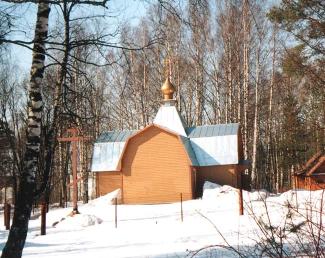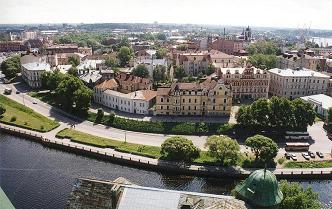Articles
/
The Vyborg Carhedral
The Vyborg Carhedral
Subject /
Religion. Church/Churches of other confessions
The Vyborg Carhedral (the town of Vyborg, 6 Storozhevaya Bashnya Street ), the cathedral is the oldest building of the centre of Old Vyborg . The wooden cathedral for the Catholic parish was built in the middle of the 14 th c, in 1411 the wooden cathedral was burned during the siege of the town by the Novgorod troops. It was restored in 1418 and consecrated in honour of the Virgin Mary and St Olaph. The length of the rectangle plan building was 36 m, the building width was 18,5 m; the arm store extension was added at the southern side of the building , the extension for a diaconicon was added at the north side of the building . In 1477 the church was burned, in 1494 it was restored using the former foundation and walls. In the late 15th c the church was adapted for the Lutheran church and it was consecrated by Maunu Syarkilakhti, the bishop of Abo. The church got the status of the cathedral when the Vyborg Consistorium was organized in 1554. About 1554 the building was enlarged according to the initiative of Bishop Paaveli Yusten. In the 17 th c. the walls, after the restoration work, were decorated by the coat of arms of renowned families of Vyborg. The cathedral was seriously damaged during the capture of Vyborg by Russian troops in 1710. In 1719 the cathedral was restored and adaptedd for performing the Orthodox religious services according to the order of Peter I. It was consecrated in honour of the Nativity of Christ (1722 or 1725). Only two Swedish Communion cups were kept from the former cathedal utensils (1651). In 1738 the cathedral was burned and it was restored under Empress Anna Ioanovna. In 1744 the side- chapel of Apostle Peter and Apostle Paul was built (in the memory of the field church of Peter I). The Gospels of 1703 was kept in the cathedral. Colonel Bolotov (the father of the historian A.T. Bolotov), commander of the Arkhangelogorodsky Regiment, was buried under the cathedral. The cathedral was seriously damaged during the fire of 1793; in 1799–1805 the cathedral was transferred to the Provisions depot as a store. The clock tower was used as the bell tower of the new Cathedral of the Saviour and the Transfiguration of Christ (it was consecrated in 1788), the street kept the name "Tserkovnaya" ( Church Street). In 1912-1913 the Orthodox Church of Three Saints of the 8th Finland Infantry Regiment, with side-chapel of Apostle Peter and Apostle Paul, was organized in the building. In 1918 the cathedral, after the major repairs, was adapted for the Lutheran Church of St Peter and St Paul. Johann Varyevaara was the last dean of the cathedral ( 1923-1940). The cathedral was destoyed during the capture of Vyborg by Soviet troops (March 1940), the ceiling and roof were burned. Now the cathedral is in a ruined condition.
Authors
Shkarovsky, Mikhail Vitalyevich
Bertash, Aleksandr Vitalyevich
Persons
Anna Ivanovna, Empress
Bolotov, Andrey Timofeyevich
Bolotov, Timofey Petrovich
Peter I, Emperor
Syarkilakhti, Maunu, bishop
Varyevara, Johann
Yusten, Paaveli, bishop
Geography
Leningrad Oblast, the/Vyborg District/Vyborg Town/Storozhevaya Bashnya Street
Bibliography
Кепп Е.Е. Выборг: Художественные достопримечательности. 1992.
Князева Е.Е., Соловьева Г.Ф. Лютеранские церкви и приходы в России XVIII-XX вв. Ч. 1. СПб., 2001., С. 72-73
Шкаровский М., Черепенина Н. История Евангелическо-лютеранской церкви на Северо-Западе России. 1917-1945. СПб., 2004, С. 202-203
Subject Index
Clock Tower (Vyborg Town)
The Lutheran Church of Sts. Peter and Paul (Vyborg Town)
Mentioned in articles:
|
hidden
|
Military Orthodox churches
Military Orthodox churches began to organize in Saint Petersburg in the beginning of the 18th c chiefly as field churches. In 1800 the post of the military ober-priest was introduced by the order of Paul I (later it was named the arch-presbuter... more
|
|
|
|
hidden
|
Vyborg, town
VYBORG (Swedish Wiborg; Finnish Viipuri, until 1948), town, adm. center of Vyborg District. Population: 79,200. The toponym Vyborg originates from the Old Norse Wiborg = “sacred fortress.” It was founded in 1293 at the place of the Vuoksa River’s... more
|
|
|
|







